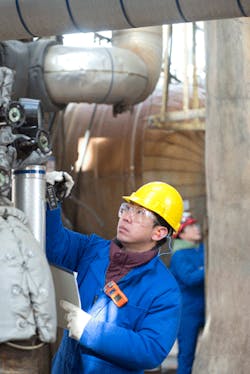Disposable Gas Monitors: Are They Really Cheaper?
Simple. Easy. Cost-effective. These are some of the words most commonly associated with disposable single-gas instruments. While all of these features sound attractive, just how simple, easy and cost-effective are disposable single gas monitors?
Let’s delve into the world of disposable instruments and reveal that although the sticker price might indicate “cheap,” in the end, disposable instruments ain’t always cheaper.
First, let’s uncover the recent history of single-gas monitors. For those familiar with the gas detection market, you might be familiar with the opinion that the evolution of technologies used for monitoring gases in potentially hazardous environments has been somewhat slow. Sure, we’re far from the days of a canary in a cage; but for several years, it has been said that gas detection manufacturers played part in what became a competitive bakeoff.
A new instrument was introduced to the market with a slightly better feature – in one way or another – than the one previously introduced. But, for the most part, no monitor significantly was better than the next and technological progress in the industry became evolutionary rather than revolutionary. So, in the absence of differentiation, it wasn’t long until price became as high a selling feature as any. Soon, in the single-gas market, disposable instruments became very attractive as they advertised with phrases like “extremely low price points” and “very low cost of ownership.”
Most people agree that you get what you pay for, but what do users truly get with the purchase of a disposable monitor? Here are a few things to consider before making a purchase:
Buying a disposable, single-gas monitor does not mean throwing the instrument away when you are finished using it. Responsible companies take proper waste remediation steps to remove the instrument’s lead, batteries and heavy metals prior to it hitting the landfill. Manufacturers have estimated this cost to be around $50 per instrument. This can become extremely costly with a large fleet.
Next, you should consider the reliability of the instrument, keeping in mind that time spent using unreliable gas monitors is time spent away from the core competency of your business. When shopping around, it can be tempting to ignore the shortcomings of a product if it means saving a couple of dollars.
We’re all guilty of this. We explain away the problems: “Maybe it didn’t work properly right out of the box… Maybe I had to send it back several times… Maybe I had to call customer service repeatedly… But it was cheap.”
Or perhaps you’ve rationalized that you have other instruments as part of your fleet that “kind of” do the same thing anyway and that this monitor is just redundant protection. If this is the case, then why did you buy it? If you bought a gas monitor, you need it and it should work … every time. Factor in your salary spent in dealing with the instrument problems, as well as those of idle employees, and your cheap instrument just became very expensive.
Lastly, you might consider asking yourself “would I bet my life on this instrument?” It’s a simple but profound question that gets overlooked too often in the quest to save money. In the “me too” single-gas market, some might say that it can be difficult to see a meaningful difference between products and, as mentioned, it can be easy to make a decision solely based on price.
Perhaps a good rule of thumb could be that if there’s potential to lose more than you saved, you’re making a bad decision. Companies owe it to themselves, and more importantly to their employees, to make part of their fleet those single-gas monitors that will keep their workers the safest, even if it isn’t the cheapest option.
Cost surely should not be the most deciding factor in purchasing any gas monitor that will keep your workers safe. However, it is important to recognize what you are getting for your initial investment and the potential costs that your buying decision could yield in the long term.
In the end, no matter the instrument you choose, be sure that it is ideal for the environment in which employees will be conducting their work. Additionally, be sure that it will work as it should from the day you purchase it through the life of the instrument.
Not considering all of your options could mean serious consequences when it comes to protecting workers from hazardous gases. And, after all, there is no price tag on sending a worker home safely to his or her family each and every night.
About the Author
Bill Marencel
Global Director of Single Gas Solutions and Portable Accessories
Bill Marencel is the global director of Single Gas Solutions and Portable Accessories at Industrial Scientific. He can be reached at [email protected].


